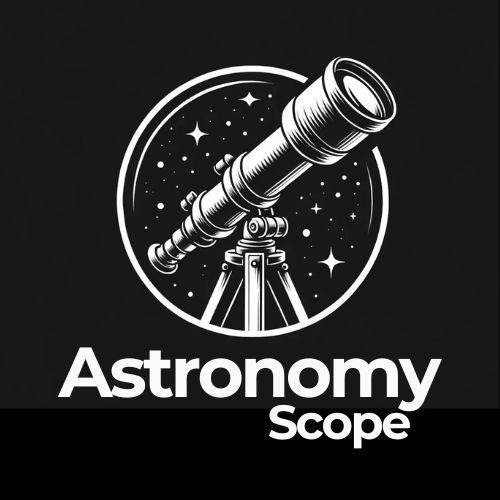If you’re contemplating the Celestron CPC 925 or the Celestron CPC 1100, you might be unsure which one will best meet your needs.
It’s a decision filled with exciting potential, yet the array of specifications can be daunting.
The Celestron CPC 925 and 1100 are both top-tier telescopes, offering an impressive array of features and advanced technology that make celestial exploration exciting and accessible.
However, even amongst these high performers, certain distinctions may make one a better fit for you than the other.
In this guide, we’ll help you understand what each model has to offer, where they diverge in their features and performance, and how these differences might impact your stargazing experience.
We’ll consider everything from optical prowess to weight, factoring in the practical elements that can influence your enjoyment and use of the telescope.
But most importantly, I’ll try to help you identify which one is best for you.
So, with this all in mind, let’s delve into it.

Quick Verdict
If you have the budget available, the Celestron CPC 1100 is the telescope to get.
It has a 41% greater light gathering capability and a 19% increase in magnification.
All helping you to see more, with greater clarity, in the night sky.
Celestron CPC 925 vs 1100




Differences Between the Celestron CPC 925 vs 1100
Aperture
- Celestron CPC 1100: 279.4mm (11″)
- Celestron CPC 925: 235mm (9.25″)
In the world of telescopes, the aperture, or diameter of the lens or mirror, is vital.
It determines how much light the telescope can gather, directly influencing the brightness and detail of the image.
The Celestron CPC 1100 boasts an aperture of 279.4mm (11″), outpacing the CPC 925’s 235mm (9.25″) aperture by almost 19%.
This increase allows the 1100 to provide significantly sharper and brighter images.
Focal Length
- Celestron CPC 1100: 2800mm (110″)
- Celestron CPC 925: 2350mm (93″)
The focal length of a telescope defines its magnification potential and field of view.
The CPC 1100, with a focal length of 2800mm (110″), surpasses the CPC 925’s 2350mm (93″) by nearly 19%.
This greater focal length translates into higher magnification capabilities, enabling you to view distant celestial objects more clearly and in greater detail.
Highest Useful Magnification
- Celestron CPC 1100: 660x
- Celestron CPC 925: 555x
Higher magnification can bring distant stars and galaxies into clear view, but only if the telescope’s optics and aperture support it.
The Celestron CPC 1100 shines in this aspect, offering a maximum useful magnification of 660x compared to the 925’s 555x.
That’s an improvement of about 19%, providing a tangible difference when observing far-off celestial bodies.
Light Gathering Power
- Celestron CPC 1100: 1593x
- Celestron CPC 925: 1127x
Light gathering power is where the Celestron CPC 1100 truly excels. It gathers light at 1593x, significantly more than the CPC 925’s 1127x – a remarkable 41% increase.
This ability drastically enhances image brightness and clarity, especially for faint objects, enabling you to observe galaxies, nebulae, and star clusters in exceptional detail.
Weight
- Celestron CPC 1100: 84 lbs (38.1 kg)
- Celestron CPC 925: 77 lbs. (34.9 kg)
A telescope’s weight may not directly impact its performance, but it plays a crucial role in portability and ease of setup.
The CPC 1100 weighs in at 84 lbs (38.1 kg), slightly heavier than the CPC 925 at 77 lbs. (34.9 kg).
This 9% increase in weight is something to consider depending on your observing habits.
If you plan on frequently transporting your telescope or if you have a lighter, less stable mount, the additional weight could be a downside.
However, if you have a sturdy mount and don’t intend to move your setup frequently, the trade-off for the 1100’s superior optical performance is certainly worth it.
Similarities Between the Celestron CPC 925 vs 1100
While exploring the differences between various telescopes can shed light on their unique strengths, it is also important to appreciate their shared features.
When comparing the Celestron CPC 800 and 925, one can identify a host of similarities that elevate both models.
Let’s dive into the features these telescopes share, and the impact they have on their performance and the astronomical observations they afford.
Schmidt-Cassegrain Optical Design
The Celestron CPC 800 and 925 both feature the Schmidt-Cassegrain Optical Design.
This design combines the advantages of lenses and mirrors while eliminating their shortcomings, resulting in high-quality views with less chromatic aberration.
This means you get clear, sharp images regardless of the telescope you choose.
F/10 Focal Ratio
Both telescopes boast an f/10 Focal Ratio.
In telescope parlance, this ratio is known as the “speed” of the telescope’s optics.
An f/10 Focal Ratio is a nice balance for visual observing, offering a wide field of view and allowing for sharp and high-contrast images.
This makes these telescopes versatile, capable of delivering excellent views of both planetary and deep-sky objects.
NexStar Computer Control Technology
The NexStar computer control technology, featured in both the CPC 800 and 925, allows for easy and precise navigation of the night sky.
This intuitive system can automatically slew the telescope to any of its 40,000 celestial objects, a shared database that includes over 100 user-definable objects and expanded information on over 200 objects.
From famous deep-sky objects to the most beautiful double, triple, and quadruple stars, you’ll have a wealth of knowledge at your fingertips, further enhancing your observing experience.
SkyAlign Technology
Another significant similarity between the CPC 800 and 925 is the inclusion of SkyAlign technology. This feature simplifies the process of aligning your telescope.
By allowing you to align on any three bright celestial objects, SkyAlign ensures a fast and straightforward alignment process, enabling you to spend less time setting up and more time stargazing.
Drive Base and Drive Mechanics
Both models also share the re-designed drive base and drive mechanics.
This design ensures quiet operation and includes large drive gears and a quick-release clutch.
Such features make for smoother tracking and slewing, adding to the user-friendly nature of these telescopes.
Flash Upgradeable Hand Control Software and Motor Control Units
Lastly, the Celestron CPC 800 and 925 both come with flash upgradeable hand control software and motor control units.
This allows you to download product updates over the Internet, ensuring that your telescope’s software always stays current with the latest features and improvements.
Celestron CPC Telescope Tour
CPC Telescope Details
CPC 925
- 9.25-inch diffraction limited Schmidt-Cassegrain telescope
- Features a fully computerized dual fork arm altazimuth mount
- NexYZ connects your smartphone to your telescope, spotting scope, binocular, monocular, and microscope so you can capture images and video through the eyepiece.
- Works with a wide range of mobile phone models, including all the latest devices from Samsung, Google, and Apple.
CPC 1100
- 11" Schmidt-Cassegrain telescope with Celestron’s premium StarBright XLT optical coatings
- Fully computerized dual fork arm altazimuth mount with internal GPS and database of 40,000+ celestial objects
- NexYZ connects your smartphone to your telescope, spotting scope, binocular, monocular, and microscope so you can capture images and video through the eyepiece.
- Works with a wide range of mobile phone models, including all the latest devices from Samsung, Google, and Apple.
Final Verdict: Should You Get The CPC 925 or 1100?
When we compare these powerful Celestron CPC telescopes, the final verdict rests on your specific needs, preferences, and budget.
Indeed, you really can’t go wrong with either telescope.
The Celestron CPC 925 and 1100 both share the same fine optics, advanced computer control, and user-friendly features that make for a high-quality viewing experience.
That said, there’s no denying the allure of the Celestron CPC 1100’s extra aperture.
This increases light-gathering power by a considerable margin, offering brighter, more detailed views of the universe.
If you’re an astronomy enthusiast seeking the best possible view, the 1100 delivers on that front.
However, it’s essential to consider practical factors as well.
The 1100 is heavier than the 925, with a weight difference of approximately 7 lbs.
If you frequently move your telescope or have a lightweight mount, this extra weight may be a consideration.
If money is no object and you’re seeking the most detailed views of the cosmos possible, the Celestron CPC 1100 would be my recommendation.
Its superior aperture, focal length, and light-gathering power make it worth the investment, enhancing your stargazing sessions to a great extent.
However, whether or not it’s worth it also depends on your budget and what else you need to buy.
If you need additional astronomy gear like a chair or accessories, the extra cost of the 1100 could tip the balance.
In summary, the Celestron CPC 1100 is the telescope of choice, providing superior power and detail that can transport you closer to the stars.
If you can accommodate the higher price and weight, it’s an investment that promises to deliver countless nights of stunning celestial views.
Related guides:

Hey, my name is Jeremy. I’m a passionate and seasoned astronomer who loves nothing more than observing the night sky. I also love researching, learning, and writing all things Space and the Universe. I created Astronomy Scope to share my knowledge, experience, suggestions, and recommendations of what I have learned along the way while helping anyone to get into and maximize their enjoyment of the hobby.


